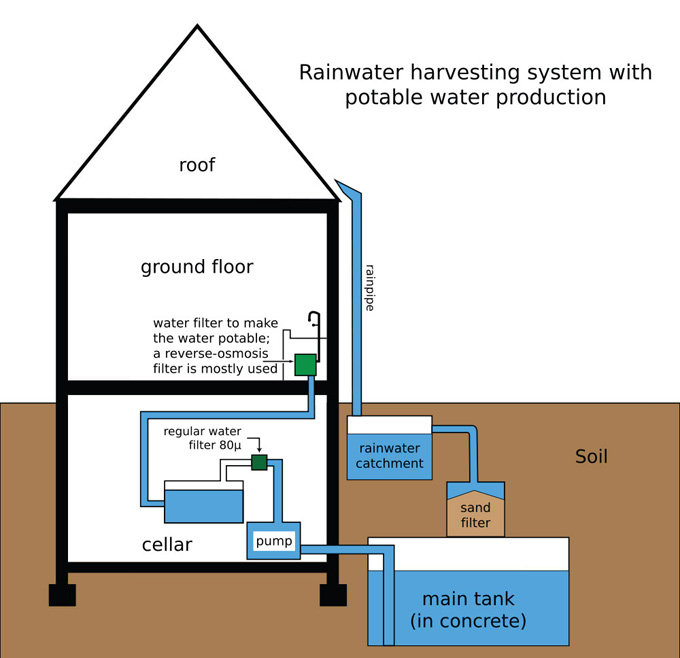Part 2 Continued

In order to determine how much water you should collect with your roof mounted rainwater collection system you need to figure your estimated usage or demand. A typical water conserving house will use 25 to 50 gallons of water per day, when averaged across all members of the household. One quick way to ballpark estimated usage is to look at old utility bill and divide that number by the number of individuals in your household.
While historical averages are an easy way to estimate your demand, other factors like aging, additions to the household, subtractions from the household (going off to college), and seasonal activities may alter your estimated numbers considerably and change the size of your College Station roofing structure.
Indoor Water Usage Estimation
Occupancy rate is the single biggest factor in estimating indoor water usage. The American Water Works Association performed a study of over 1200 homes in 1999 and found that on average households used 49.6 gallons of water per person, every day.
A simple formula can be used to help you estimate your water usage based on the type of fixture used;
(Water Consumption Fixture) x (Daily Usage) x (Number in Household) = Monthly Demand
Different fixtures have different average consumption rates. According to the Texas Rainwater Harvesting Manual, dual flush toilets only use 1 gallon when flushing. Showerheads use around 2.2 gallons per minute. Faucets in your kitchen sink and bathroom also use 2.2 gallons per minute. Baths use around 50 gallons. A typical water conservative clothes washer will use 18 to 25 gallons of water per load.
In order to get the most accurate value for your home, add all of the water consumption for each person and from all of the devices together.
Keeping the Water Supply Consistent
Most rooftop rainwater collection systems, like the one pictured above, do provide a direct water feed to the house, but rather to a collection reservoir or tank. In the tank the water is treated, purified, and then pumped out to the consumption fixtures and water heater.
then pumped out to the consumption fixtures and water heater.
The rooftop collection portion of the system must be large enough to collection enough to sit in the tank during purification, treatment, and heavy usage. Without enough collection, a home will have to rely on municipal resources as well.
An important consideration for home owners considering rainwater collection systems is that the water heater in the home can be powered by a solar array that is also rooftop mounted. In fact many home owners that perform either solar or water modifications to their home, often do both because of added benefit and savings.
Schulte Roofing is a College Station roofer with over 100 years of roofing experience. Schulte Roofing has been backing up rooftop rainwater collection systems in College Station for the past 18 years. For more information on calculating your water usage, collection system sizes, and roofing repairs, contact Schulte Roofing, The Home of the Bulletproof Roof® Guarantee.
Reference: Krishna, H.J., 2005. Texas Manual on Rainwater Harvesting, State of Texas, 2005
